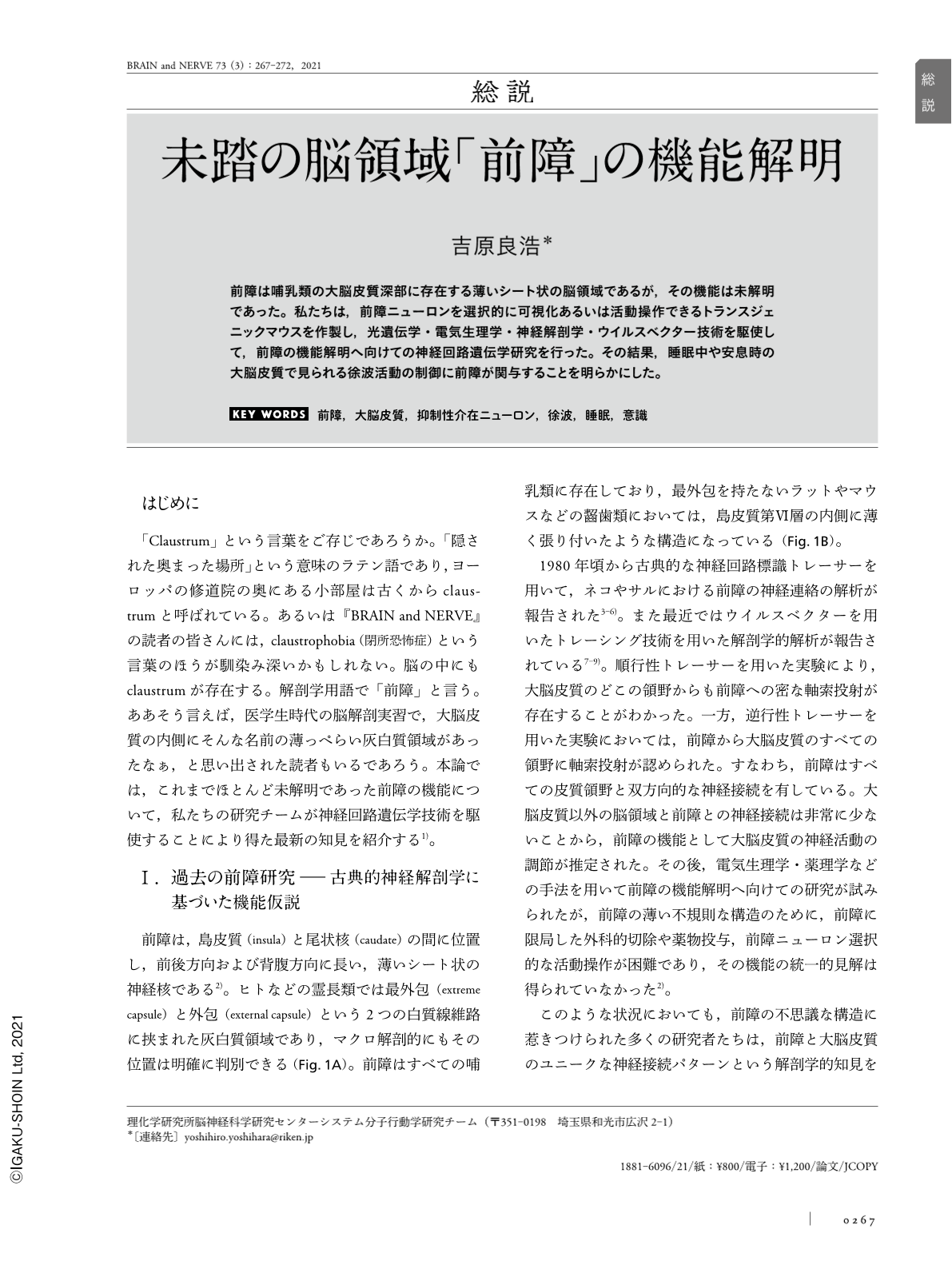Japanese
English
- 有料閲覧
- Abstract 文献概要
- 1ページ目 Look Inside
- 参考文献 Reference
前障は哺乳類の大脳皮質深部に存在する薄いシート状の脳領域であるが,その機能は未解明であった。私たちは,前障ニューロンを選択的に可視化あるいは活動操作できるトランスジェニックマウスを作製し,光遺伝学・電気生理学・神経解剖学・ウイルスベクター技術を駆使して,前障の機能解明へ向けての神経回路遺伝学研究を行った。その結果,睡眠中や安息時の大脳皮質で見られる徐波活動の制御に前障が関与することを明らかにした。
Abstract
The claustrum is a thin, sheet-like neural structure located beneath the cerebral neocortex, and has reciprocal connections with nearly all neocortical areas. It has been hypothesized to play roles in higher brain functions, such as consciousness, multisensory integration, salience detection, and attentional load allocation. However, its roles in brain physiology have not been precisely elucidated, as only a few experimental studies on claustrum function exist. We established a transgenic mouse line expressing Cre recombinase specifically in a population of claustral excitatory neurons that received inputs from and sent outputs to widespread neocortical areas. The claustral neuronal firing was mostly correlated with the cortical slow-wave activity. In vitro optogenetic stimulation of the claustrum induced excitatory postsynaptic responses in most of the neocortical neurons, however, action potentials were primarily elicited in the inhibitory interneurons. In vivo optogenetic stimulation induced a synchronized Down-state featuring prolonged silencing of neural activity in all layers across widespread cortical areas, followed by Down-to-Up state transition. In contrast, genetic ablation of the claustral neurons led to an attenuation of slow-wave activity in the frontal cortex. These results indicate a crucial role of the claustum in synchronizing inhibitory interneurons across the wide cortical areas for spatiotemporal coordination of slow-wave activity.

Copyright © 2021, Igaku-Shoin Ltd. All rights reserved.


